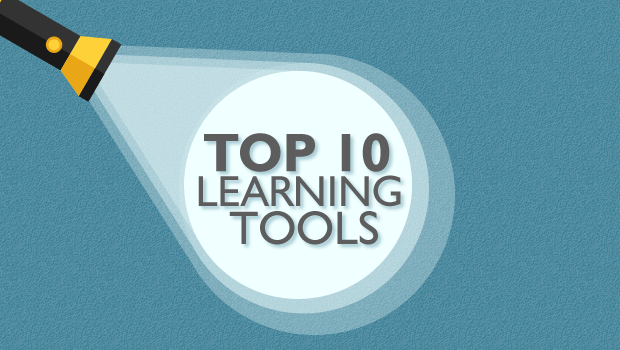Jane Hart conducts annual surveys of the top 100 learning tools. Her site, Centre for Learning & Performance Technologies, has some wonderful resources on learning tools, social learning, and more. If you’ve not yet visited this website, I strongly recommend you do.
We decided to contribute to the 2009 list by sending in our own list of Top 10 Tools for Learning Professionals. Instructions for participating in the survey read: “Please provide the names of your 10 favourite tools for creating learning for others, for your own professional practice or personal productivity PLUS a sentence or two why you like each one.”
So here’s a list of our favorite tools for creating custom content for clients:
1. Adobe Flash: It’s no wonder this is at the top of our list. It has established itself as the de-facto standard tool for interactive eLearning projects and is the tool favored by most eLearning developers. It helps us create interactive and engaging web-based Learning Solutions. Though Microsoft’s Silverlight is coming up, we don’t see it posing a challenge to Adobe’s Flash anytime soon.
2. Adobe Photoshop: This is a great tool for creating and editing graphics/photos/images, giving output compatible for many delivery formats with multiple file extension options. Our team just loves it.
3. FlashDevelop: We like this free and open source (MIT license) code editor, which has support for AS2 and AS3, code completion, and code generation.
4. MS Word: This is our preferred tool for storyboarding. It allows for reviews and comments from peers, clients, and SMEs, with changes tracked.
5. Adobe Captivate: We find this an easy-to-use and reliable tool for creating application simulations.
6. 3D StudioMax: We use this 3D modeling, texturing, and animation tool to create environments for game-based learning, and for scenarios and products in our soft-skills and product-training courses. Advanced features for character creation and animation, and special (CG) effects and dynamics, help to display realistic environments, situations, and actions.
7. Adobe Dreamweaver: We use this HTML editor to create websites and XML-based eLearning courses. The design view allows us to see the results instantly, without having to use a web browser. Browser compatibility issues and validations are easily taken care of, and CSS integration offers a convenient way to ensure consistent appearance of web pages.
8. Adobe After Effects: This sophisticated desktop/broadcast video editing tool has useful features like compositing, lighting adjustments, etc. It produces output in high-quality videos for DVD formats, streaming videos (web), and also for mobile devices used for video-based training programs.
9. Articulate Suite: We have been using this for some years now. It has some minor issues, but it is still the best rapid authoring tool available out there. Moreover, clients seem to have committed to it and hence there is demand for outsourced development work in Articulate. The best thing about this tool is the support available on forums and blogs.
10. UpsideRapid: This is our proprietary rapid authoring tool, a Flash and XML framework we use for developing lower level courses quickly and cost effectively.
And here is an additional list of my Top 5 Favorite Tools for Personal Learning:
1. Google Search: This is the first place I go when I’m looking for answers. It guides me straight to the right resources and provides many more links to explore and enrich myself.
2. Google Reader (and numerous blogs): Blogs have been a huge source of information, as well as a big influencer, about anything new in recent times. I get a chance to learn from the gurus and sometimes interact with them. I have my favorite blogs (about 20 of them) on Google Reader which makes it easier to keep up with the latest posts.
3. YouTube: This is a great source for some free video-based training resources – especially for soft skills like sales, negotiation, etc. I also use it very often to look for new product reviews. I have picked up most of my knowledge about social media from here.
4. Webex/AdobeConnectPro: These make desktop sharing and synchronous presentations a breeze, and are very effective for product demonstrations and webinars. Recorded webinars are one of my key sources of knowledge.
5. Twitter: I’ve only been on Twitter for the last two months, but it is already up there on my top 5 list. I do think it will become my # 1 tool for personal learning pretty soon. It’s an amazing way to catch the headlines and get to know of excellent resources in your domain. You just need to connect with the right people. I’m looking to expand my use of the tool as I learn it.
My Twitter id: www.twitter.com/gargamit100
As most resposes on Jane’s site list tools for personal learning, I am keen to learn what you are using for creating learning solutions for others? Please do share your favorite ones.



















